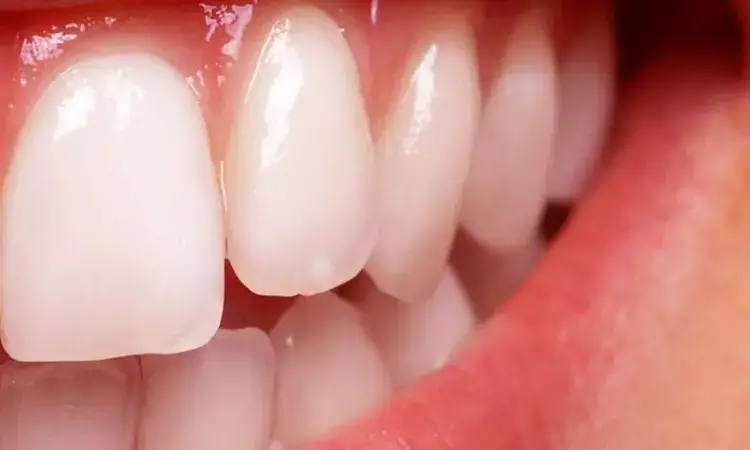- Home
- Medical news & Guidelines
- Anesthesiology
- Cardiology and CTVS
- Critical Care
- Dentistry
- Dermatology
- Diabetes and Endocrinology
- ENT
- Gastroenterology
- Medicine
- Nephrology
- Neurology
- Obstretics-Gynaecology
- Oncology
- Ophthalmology
- Orthopaedics
- Pediatrics-Neonatology
- Psychiatry
- Pulmonology
- Radiology
- Surgery
- Urology
- Laboratory Medicine
- Diet
- Nursing
- Paramedical
- Physiotherapy
- Health news
- Fact Check
- Bone Health Fact Check
- Brain Health Fact Check
- Cancer Related Fact Check
- Child Care Fact Check
- Dental and oral health fact check
- Diabetes and metabolic health fact check
- Diet and Nutrition Fact Check
- Eye and ENT Care Fact Check
- Fitness fact check
- Gut health fact check
- Heart health fact check
- Kidney health fact check
- Medical education fact check
- Men's health fact check
- Respiratory fact check
- Skin and hair care fact check
- Vaccine and Immunization fact check
- Women's health fact check
- AYUSH
- State News
- Andaman and Nicobar Islands
- Andhra Pradesh
- Arunachal Pradesh
- Assam
- Bihar
- Chandigarh
- Chattisgarh
- Dadra and Nagar Haveli
- Daman and Diu
- Delhi
- Goa
- Gujarat
- Haryana
- Himachal Pradesh
- Jammu & Kashmir
- Jharkhand
- Karnataka
- Kerala
- Ladakh
- Lakshadweep
- Madhya Pradesh
- Maharashtra
- Manipur
- Meghalaya
- Mizoram
- Nagaland
- Odisha
- Puducherry
- Punjab
- Rajasthan
- Sikkim
- Tamil Nadu
- Telangana
- Tripura
- Uttar Pradesh
- Uttrakhand
- West Bengal
- Medical Education
- Industry
Short Fiber-Reinforced Composites may improve fracture resistance in posterior restorations: Study

A recent systematic review published in the Journal of Esthetic and Restorative Dentistry revealed that short fiber-reinforced composites (SFRCs) may improve fracture resistance and failure patterns in posterior restorations. The existing evidence is limited and of low certainty, therefore their routine clinical use should await confirmation from long-term randomized trials.
The review was conducted according to PRISMA 2020 guidelines, which analyzed data from both laboratory (in vitro) and real-world (clinical) studies. Comprehensive searches across 5 major scientific databases and additional gray literature were performed up to July 2025.
In total, 28 studies (23 in vitro and 5 clinical trials) met the inclusion criteria all focusing on SFRC-based restorations used in posterior teeth, where chewing forces are highest. This research evaluated the fracture resistance, failure patterns, and overall clinical performance of these innovative materials. The risk of bias in included studies was critically assessed using RoBDEMAT, RoB 2.0, and JBI tools.
Due to variability in study designs, materials, and testing methods, a narrative synthesis was adopted instead of a statistical meta-analysis. Stronger Restorations and Repairable Failures
In vitro results were consistently positive, where the restorations that incorporated SFRC layers beneath conventional composite surfaces demonstrated notably higher fracture resistance, particularly in large mesio-occluso-distal (MOD) cavities and in endodontically treated teeth, which are more prone to structural weakness.
Fracture resistance of SFRC restorations outperformed traditional composites in nearly all test models. Failures in SFRC restorations were often repairable where the cracks were confined and restorations could be fixed without total replacement.
The greatest improvements were seen in deep or wide cavities with weakened tooth walls. Short-term trials (up to 4 years) reported satisfactory survival rates and good marginal adaptation, though differences compared with standard composites were not statistically significant.
While SFRCs offer a mechanically reinforced solution that mimics the stress-dissipating behavior of dentin, this review emphasizes that clinical evidence remains limited and of low certainty. Current trials are short-term and vary in sample size and methodology.
Overall, these findings suggest that SFRCs hold great potential for improving durability and reducing catastrophic failures in posterior restorations. However, routine clinical use should remain cautious until findings are supported by long-term randomized controlled trials.
Reference:
Fernández, E., Díaz, L., Bersezio, C., Martín, J., Cabello, R., & Angel, P. (2025). Efficacy of short fiber-reinforced composite resins in MOD and endodontically treated posterior teeth: A systematic review. Journal of Esthetic and Restorative Dentistry, jerd.70046. https://doi.org/10.1111/jerd.70046
Neuroscience Masters graduate
Jacinthlyn Sylvia, a Neuroscience Master's graduate from Chennai has worked extensively in deciphering the neurobiology of cognition and motor control in aging. She also has spread-out exposure to Neurosurgery from her Bachelor’s. She is currently involved in active Neuro-Oncology research. She is an upcoming neuroscientist with a fiery passion for writing. Her news cover at Medical Dialogues feature recent discoveries and updates from the healthcare and biomedical research fields. She can be reached at editorial@medicaldialogues.in
Dr Kamal Kant Kohli-MBBS, DTCD- a chest specialist with more than 30 years of practice and a flair for writing clinical articles, Dr Kamal Kant Kohli joined Medical Dialogues as a Chief Editor of Medical News. Besides writing articles, as an editor, he proofreads and verifies all the medical content published on Medical Dialogues including those coming from journals, studies,medical conferences,guidelines etc. Email: drkohli@medicaldialogues.in. Contact no. 011-43720751


